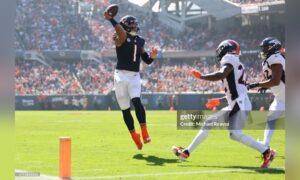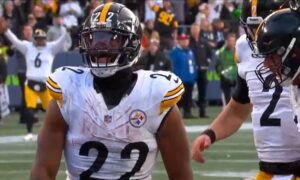By Matthew Marczi
For a team facing so much adversity in the past season and heading into the next with a litany of questions to address, it’s natural to consider the issues and how they can either go right or wrong, as well as how they will affect the broader dynamics and future success of the team, both heading into this season and into the future.
Though not statistically true, it is technically true that every team enters the offseason with the potential to finish the year as the league champion or as the first team on the clock in the next draft.
Some teams have a wider realistic range than others, and I think the Pittsburgh Steelers are one of those teams. Think of them as Schrödinger’s franchise; in February, they are both future champions and future owners of the top draft pick.
In order to gain a better feel for not only the issues facing the team this year, but how those issues might play out, it’s useful to take the devil’s advocate approach. This is the optimistic side of the coin.
Question: Can Larry Foote still be an important part of this defense, and is he worth retaining?
As it currently stands, the immediate future of several longtime Steelers players are hanging in the balance. Safety Ryan Clark is currently without a contract, while Ike Taylor and Troy Polamalu have bloated cap hits from an 8-8 team that’s already in the red in terms of available cap space.
And then there’s Larry Foote, the longest-serving linebacker on the team, and the man who knows the defense better than anybody but Dick LeBeau.
While he’s under contract with a very manageable cap hit, his status on the team is considered in jeopardy thanks to the youth movement at the position—namely Vince Williams, Terence Garvin, and, hopefully, Sean Spence.
During the 2012 season, the inside linebackers hardly missed a single snap between them. In 2013, Foote was limited to just 53 snaps in the opening day loss to the Tennessee Titans after suffering a ruptured biceps attempting to bring down Chris Johnson.
While most have a pretty good understanding of the impact that losing Foote had on the team, I do think that it gets somewhat underappreciated.
As a result of his injury, the Steelers used sub-packages with greater frequency, to the point that they played with six defensive backs more often than they played with four, and that most certainly had an impact on the run defense.
It forced the Steelers to try out a bunch of young players with Kion Wilson, Williams, and Garvin all receiving time as the Buck linebacker, trying to find amongst this youth somebody capable of properly calling the defensive signals. That’s quite hard to do for anybody in their first year of the system. It in part promoted a sense of urgency for others to ‘step up’ and try to make plays, instead producing critical errors that led to big plays the other way.
More importantly, it created instability, especially in the front seven, in terms of how teammates play off one another. I believe it especially affected Lawrence Timmons early on in the season to see Williams or Wilson, and later even Troy Polamalu, lining up next to him and not knowing if they know their gaps and angles.
While these effects wouldn’t be nearly as drastic this season as they were last season, due to the immediacy and lack of preparedness involved, it still speaks to how important Foote has been to this defense.
Foote is a long way away from his injury already, and there’s no reason to believe that he won’t be at full speed when offseason training begins. In addition, his cap hit barely cracks the top 15, tied with Bruce Gradkowski for that 15th spot with a cap number of $1.83 million.
Cutting him would only save the team $1.166,666 million, and that’s without factoring in the requisite displacement cost of the player that would be replacing his value in reckoning the top 51 contracts.
While it’s hard to argue against the fact that he’s well past his prime, he can still play, and, at worst, he can continue to provide guidance for the young Bucks on the team and leadership for the entire locker room. If not starting, he can be highly serviceable in a rotational situation or as the primary backup inside. That alone could justify his salary.







